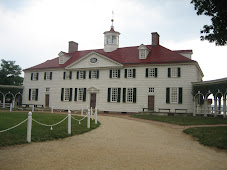 As a teacher, I feel most in control within the walls of my classroom. When I closed that door every morning, I am able to shut out all the criticisms, negativity and the failures of yesterday and execute my plans for a new day. Peter Senge's Schools That Learn covers the intricacies and complexities of the existing system of education but the portion that speaks to me the most is the about the classroom. There are powers to be that are simply beyond my control but my daily interactions with my students is where I can make a difference so that's where I will start my work.
As a teacher, I feel most in control within the walls of my classroom. When I closed that door every morning, I am able to shut out all the criticisms, negativity and the failures of yesterday and execute my plans for a new day. Peter Senge's Schools That Learn covers the intricacies and complexities of the existing system of education but the portion that speaks to me the most is the about the classroom. There are powers to be that are simply beyond my control but my daily interactions with my students is where I can make a difference so that's where I will start my work.Chapter III starts off with the design and creation of a learning classroom - what a concept! Imagine a classroom that is constantly evolving and causing students to be learning, thinking and productive interactions with or without a teacher standing in the front of the room (102). I was once told that the majority of a good teacher's work is outside the classroom during preparation and once class starts, the students are the ones hard at work! As I read on in the chapter, I find myself longing after the classroom described as "dynamic", "interactive", and most importantly "passionate".
Many of Carol Ann Kenerson's words (110-1116) echoed in my head as I considered my own classroom and the discrepancy between my ideals and the reality. I want to know "how". HOW do I transfer my passion of learning to my students? HOW do I foster intrinsic motivation and gear my students away from their obsession with grades? HOW do I train my students to look away from me and look to each other as contant resources? HOW do I overcome the challenges and resist the tendency to "revert to old ways and habits" (114)? HOW do I inspire?
Is there a cookbook for teaching? Although all my questions seem to have started with "how" - does any one have the secret one-size-fits-all recipe? If there really was a "HOW-TO" book out there, I doubt I will buy into any of it. Why not, you ask? Because my classroom is dynamic - the recipe is everchanging. So I've been asking the wrong questions...
Too many times, I've been driven by my curriculum and find myself teaching Social Studies rather than 12 year olds. Kenerson wrote, "A classroom is saturated with interests, desires and talents..." (111) I was so convicted by this sentence - in the name of "teaching", I am guilty of quenching these passions... the very passions that I vowed to foster! What an eye-opening realization... now I just need to fix it.
Lastly, I thought Kenerson's method of encouraging student interests was too idealistic at first, but brillant. She spoke about tapping into the students personal interests and talents and bring the old show-and-tell to a new level. Imagine a classroom full of teachers and learners alike and everyone's role changes every day... including mine.






7 comments:
Isn't it funny that there isn't a "Teaching for Dummies" out there? You're definitely right - each teacher's classroom is ever changing, with students, projects, assignments. Since I'm not in the classroom, it's refreshing to hear an analysis of "Schools that Learn" from someone that is.
Sharon - There must be a "Teaching For Dummies" out there somewhere! But you know what...it'd probably be useless, because the authors would never be able to predict and tell you how to teach through the "teachable moments" that should be happening in a "dynamic," "interactive" and "passionate" classroom.
I know that my experience as an educator has been jaded because of where I teach. "As a teacher, I feel most in control within the walls of my classroom." For me it's the complete opposite, my district has taken so much control away from the teachers that we are not really teaching anymore. "A classroom is saturated with interests, desires and talents..." In my world, that doesn't exist...
I really enjoyed your comments Tammy and agree the overriding question is always HOW do we change? Although a big part of the change is realizing that we can and should do things differently, so at least you've started the process! I liked your analogy to finding the right recipe. Although you say that even if you were able to find one, it probably wouldn't work for all people, remember that a good recipe still depends on the special touches of each individual chef. A recipe will at least start you off and it's up to you to make up the rest on your own according to your particular tastes (in this case what works best for your students). I'm sure you will find that right combination of ingredients in your own teaching and your students will all benefit!
When I was reading your blog, I couldn't help but to continously say, me too..me too!!! I ask the same questions!!! Most students hate math and have absolutely no interest in it. How could this be possible when math is something that we see and use everyday? How could I get my students to see this when I'm teaching them how to graph a quadratic equation? How could I get them to care? Your realization from the book is a big eye-opener I think for a lot of people who struggle with making the ideal classroom real. We have to remember that student passions and interests exist, and it is our job to draw them out using our content area. What a tough job that is though..
The fact that you're asking these questions is evidence that you are definitely on the right track. At the same time, there are no easy answers, but I believe that your answers are found in your classroom, among your students. Through yur observations of your students, you will discover how to teach your students, while covering your content, instead of just teaching content.
Post a Comment